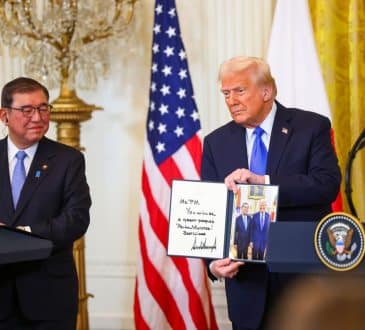How Leaders Motivate Others …

Whether it is a family-owned business, private-sector organization, publicly-traded company, non-profit entity, global business, military or government agency, the long-standing dilemma among leaders has and will always be – How do you motivate others?
Beyond the obvious, and for some maybe it is not so obvious, the loudest way in which a leader motivates others is by their own passion, energy, convictions, actions, comments, values, work ethic, behaviour, conduct, how one treats others and talks about them in their absence, and how one acts in tough and easy times – don’t make your sole judgement by any one act, consider the totality of the other person.
In working with incredibly successful business and military leaders for the past three decades globally, here are a few rules of the road that I have consulted, taught and witness work successfully for leaders in motivating others:
1) Motivate to Why (aka Purpose)
Don’t assume everyone is motivated the same way, that is the classic old school approach. Ensure that you have a way to engage each person on their own level, to gain perspective of understanding their “Purpose” for being in the organization or in their role. Purpose serves as a powerful underlying driver to what one does and is seeking. Once you have this understanding the broad macro ideas of how to engage and motivate will gush at you …
Then, motivate to and explore the WHY even deeper for a greater understanding of how to really motivate an individual on their level. Ensure everyone understands the work, commitment and its connection to purpose. Regardless of attempting to motivate, incentivize or reward individuals onward and upward, whatever you do, should always be “MERIT” based on how one excels within their expected Tasks, Duties, Responsibilities (TDRs) and “COMPETENCY” driven from their earned Knowledge, Skills and Abilities (KSAs)!
If you really want the business to be sustained and thrive … And, if you want the individual to remain and thrive – MERIT & COMPETENCY must be the rule, eliminate the passive feel-good handouts to placate and keep low to mediocre performers!
While there may be some value to someone, somewhere, at sometime for tenure based or COLA based incentives, these in the new re-boot (post 2020) global economy will drive more talent away than keep them – so consider your situation and organization unique and do not attempt to compete with others, be uniquely you.
2) Motivate to Alignment
When the purpose of the organzation and the purpose of the individual are in alignment, the ability of peers and leaders to motivate one another is much easier. One way of achieving this alignment from the beginning, is to ensure everyone shares similar Values and Vision for what the organization stands for and why they and you are there (interview smarter, higher better, on-board smartly, remain connected with one another!).
3) Motivate and Remember Maslow’s (Five-Levels of the) Hierarchy of Needs
This is a critical calibrator to designing, implementing and executing any incentive or rewards/awards/motivation system, whether a one-off situation or an involved program. Ways to motivate others can start by recognizing at any given time where is the individual in your organization you are focusing in on and then at what need state are they, address that. Then, what need state are they ascending to or that you want to motivate them to and address that next. The level or need state provides you with greater clarity of what deliverables or touchpoints an individual is focused upon, needs or expects to perform at, with limited to no distractions … As a leader how you motivate others forward and upward will be in direct correlation to where they are and your ability to deliver at that level. So, first recognize where they are and where you want them to ascend to next, then start the process of creating the ways you will go about engaging individuals or your organization to motivate their contributions …
- Need State One – Psychological/Survival – food, water, breathing, survival, getting and keeping a job/role/position/team
- Need State Two – Safety/Security – financial, health, basic needs-belongings to excel within their job/role/position/team
- Need State Three – Social – fitting in, connection with others, friends, family, relationships, a sense of confidence within their job/role/position/team
- Need State Four – Esteem – a sense of purpose and valued by others, participation in group/team activities where one can be appreciated, contribute meaningfully and achieve within their job/role/position/team and sought as the subject-matter-expert
- Need State Five – Self-Actualization – One’s higher-level goals and aspirations are actualized, more internal accomplishment focus, with less outward concern for others validation opinions being sought job/role/position/team/organization and industry
- * Need State Six – Enjoyment and Fun – I have recognized in high performing teams that are at thrive level 100 percent of the time and accelerate to levels that others benchmark off of them, individuals and teams thrive to elevate all that they do to pure enjoyment, fun, challenges and an inward focus that allows for outward servant minded collectives …
Remember, at times of crises or uncertainty, individuals and entire groups my re-calibrate downward and your ability to recognize this and provide confidence, comfort and clarity to others will in itself by massively motivating and unifying.
4) Motivate to Generational Diversity
Another accelerator to designing and implementing an incentive program or in identifying ways to motivate an individual, is to consider the generational segmentation demographic one falls into (based upon sociological and governmental indexing guides – and yes there are exceptions to rules and stereotyping, but this at least gets you thinking out of your normal mental box). If an organization is evaluating organizational wide motivation/incentive approaches and programs, consider a temporary committee with each generational segmentation represented to consult into for feedback, as what may be a profound and resounding YES deliverable for one generational segmentation may fall flat with another generational segmentation).
You can adjust the generational segmentation names and even age ranges of representation, it doesn’t matter in the final analysis, we have basically five different generational segmentations in the global workplace at the time of this article. Each has some over lapping descriptive psychological similarities that drive behaviors, value-system, and how one has been conditioned to think(logic) and feel (emotion). Each will have distinct massive differences among them, consider the generational segmentation you are dealing with and what their life influencers have been for a greater understanding of what may and may not have motivating impact upon them …
- Centurion – Over 75+-years of age. These may be influencers, members or customers and in rare situations employees …
- Centurion – 55 to 75-years of age. These may be influencers, members, customers, employees and some instances individuals coming back into the workplace …
- Generation X-Y – 40’ish (+/-) to 55’ish (+/-) years of age. These may be influencers, members, customers, employees …
- Generation Millennial – 25’ish (+/-) to 40’ish (+/-) years of age. These may be influencers, members, customers, employees …
- Generation Z –20’ish (+/-) and younger years of age. These may be influencers, members, customers, employees, interns, co-operative part-times …
5) Motivate to Macro Professional Motivation Drivers
My experience has taught me in the professional setting people are motivated in one of three ways, consider what you create for others to be feed and how you motivate others in one of three areas …
- Money/Financial – Cash, salary, wage, bonus, commission, pay-raise, gift(s), stepped-incentive programs, stock, deferred income programs, benefit programs, etc. Not all people and not every time does this one work.
- Recognition – For some, the act of recognizing meaningful accomplishment feeds that need state or level and drives them and others onward and upward. These can range from awards, rewards, citations, gifts, trips, plaques, clothing, vehicles, announcements (media/trade journals/social media/etc.), titles, upgrades to work-life environment, promotions, increased responsibilities, decreased responsibilities, talent development opportunities, thank you, etc.
- Intrinsic – Somewhat harder to define and possibly much more rewarding, being able to quantify, identify and then feed that most internal driver and motivator to an individual, that may only be seen as valuable to the recipient. This may be a variation of one of the ideas from above or it could be paying-it-forward to a cause important to the individual that may be completely unrelated to their work persona.
One way to find the keys to the individual’s motivators, is to have each person (ideally done during the on-board process) provide you with a list of entries under each of these three drivers just listed or have a pre-described list of deliverables to each driver and have an individual’s pre-rate in order of importance to them these offerings. Then when you are compelled to want to do something you will have their insights to what works for them and what does not have as much value or meaning to them.
I recall as a small child our parent’s asking each of my siblings and I to write our list for Santa Clause, the power and human resource management beauty to this, our parents then knew for each of us what had meaning and what drivers were being identified – brilliance.
6) Motivate to Three Rules of Motivation
If we surround ourselves with the right people and motivated individuals to start with, you will find the need of this LEADERSHIP MASTERY™ Article to be a rare deployable. With that said, there are times we all need some motivation, incentivization or a push …
- Meaningful – Avoid killing yourself to find out what and how to motivate others, start by reflecting on what has meaning to the individual you wish to recognize and therefor motivate. Know ‘thy’ recipient as the saying goes. For example, if I worked for you and you have never seen me wear a ball cap and I don’t collect ball caps, then giving me a ball cap for performance accomplishment may get a “thank you” from me, but it will have very little to no meaning for and to me.
- Repeatable – The other problem we have with human behavior and expectations, is that if you have ever received acknowledgement for great performance (whatever the acknowledgement, gift, award, etc.), the next time you are recognized you expect a greater motivational acknowledgement the next time. We have painted ourselves into a corner.
- Lasting Impact – The silent motivator after the fact, whatever you do to motivate others, ask yourself how do I get the biggest bang for my buck, as the saying goes. If you select smartly and deploy correctly, then the individual you wish to motivate will be motivated immediately by your act and subsequently motivated in the future from that said act. And, this can become a dual awareness building among others). For example, if you give me a fancy writing pen as recognition of a performance attained and behavior exhibited that you want me to continue with, and every time I use that pen, I will be reminded of the performance recognized and that may very well serve as continued motivator of what to achieve and sustain.
In the latest copy of THE MANAGERIAL-LEADERSHIP BIBLE graduate management text book (PEARSON EDUCATION), I go into deeper discussions and provide charts, research and suggestions around this issue of how one motivates and engages individuals within the organization (Dr. Jeffrey Magee | Books and Managerial Leadership Bible (lulu.com)) …
Again, if we surround ourselves with the right people and motivated individuals to start with, you will find the need of this LEADERSHIP MASTERY™ Article (Dr. Jeffrey Magee | E-Zines) to be limited. With that said, consider the theme of what you have read as the fuel options (motivators) for a vehicle (an individual), that vehicle being yourself and others. Just like any vehicle, consider what you drive right now or have ridden in lately? No matter what the vehicle is or how much one paid for that vehicle, every vehicle has one common denominator, at some time you will have to re-fuel it in order for it to continue working. Some vehicles need constant refueling every day (constant motivation and validation) and others just need refueling once in a while. As a leader your responsibility is to understand how each person works, what fuel grade each person needs or likes, and when they need re-fueling/re-motivating.
It should also be said, although very politically incorrect today that many individuals need to be recalibrated back to a ground zero (using 2020 as the great re-boot) at the time of their hiring and on-boarding, so as to appreciate the totality of the financials for their employment by the employer. Transparency can be a great equalizer for everyone. Many individuals do not understand what the financials add up to for their employment – payroll, local/state/federal taxes, health benefits, any/all other associated related financials (and imagine the bottom line financials every pay period for the entire labor force to an organization being published), before any of the above items are discussed and deployed.
And one key factor for all of the above Key Performance Indicators (KPIs) or action strategies and items, is to understand the purpose and expectations of the person you are wanting to engage and what is the ultimate final result or outcome you wish to accomplish as the leader in MOTIVATING others.
Written by Dr. Jeffrey Magee.
Bring the best of the CEOWORLD magazine's global journalism to audiences in the United States and around the world. - Add CEOWORLD magazine to your Google News feed.
Follow CEOWORLD magazine headlines on: Google News, LinkedIn, Twitter, and Facebook.
Copyright 2025 The CEOWORLD magazine. All rights reserved. This material (and any extract from it) must not be copied, redistributed or placed on any website, without CEOWORLD magazine' prior written consent. For media queries, please contact: info@ceoworld.biz












